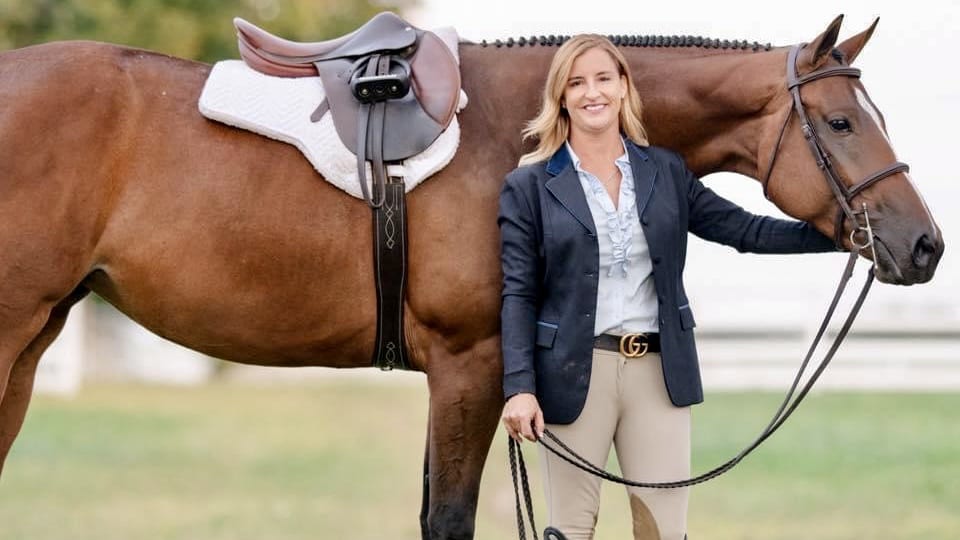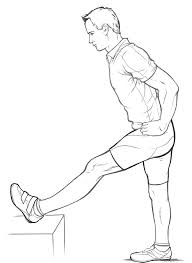Maintaining the equine athlete’s overall health is at the top of everyone’s list of priorities as they strive to compete at the best of their ability. But, are you aiming for that same level of health for yourself?
Equestrians ask a lot of their bodies, and injuries do occur. Instituting a healthy routine can be beneficial and improve your performance as a rider. So, what does a healthy routine entail?
Maintaining a healthy diet and establishing a physical fitness routine are often discussed, but what about stretching? We spoke with amateur competitor and horse show mom Jennifer D’Onofrio, a physical therapist from Ohio, about the benefits of stretching before riding.
Primary Purposes & Benefits of Stretching
Riding can be a complete body workout. Your core, arms, and legs all work together to control and communicate with your horse. Jennifer told us that “stretching prepares the connective tissues (tendons) and muscles for a high level of activity.”
Many riders may develop stiffness in their hips, hamstrings, chest, and shoulders due to remaining in the same position for long periods. By preparing your muscles and joints, you can reduce stiffness and perform better in the saddle.
Muscle strength between opposing muscle groups needs to be balanced for everyday movement and function. Muscle pairs are like partners. When one contracts, the other muscle relaxes, which allows for normal joint motion. Muscle imbalances can cause bad posture and limited mobility, which can directly affect communication with your horse.
D’Onofrio stated, “Stretching is most beneficial when you see a muscle imbalance; if one muscle is tight, the opposite muscle is often weak.” Such muscle imbalances can increase the risk of injury.
Common Injuries
Injuries from riding can vary greatly: bruises, sprains, strains, muscle tears, or even fractures. Jennifer sees the most common issues are lower back pain, groin strains, tendinitis, Achilles tendinitis, and muscle strains. Can stretching help prevent these injuries? “Absolutely. Especially in the case of tendinitis and muscle strains,” explained Jennifer.
Riders recovering from fractures or meniscus tears, which in some cases require surgery, may have additional issues with developing scar tissue that restricts the range of motion. D’Onofrio said, “Stretching can also be vital in recovering from injury; previous injuries can heal incompletely, and scar tissue can limit performance.”
Aging can also increase the probability of an injury. Jennifer explained, “As the body ages, the elasticity in our tendons and other tissues decreases. As you age, you need to be more in tune with helping your body prevent injury.” Horses are a lifelong passion. A little extra care and preparation ensure you maintain your health just as you provide extra care from your aging horse.
Exercises Before Riding
To prepare the body for performance, Jennifer suggested combining an aerobic warm-up and slowed static stretching. Aerobic exercises are meant to increase the heart rate and, in turn, improve circulation, which prepares muscles for extension. A quick walk or some jumping jacks in the stall can help get your body get ready to stretch.
D’Onofrio says, “I prefer slow, static stretching. This gives the muscle and connective tissue time to adjust. I typically have a patient perform a stretch three times for 30 seconds each.”
Jennifer shared general principles to follow for stretching: “Breath, do not hold your breath. This increases muscle tension and increases blood pressure.” When stretching, never push yourself into pain. There should never be a sudden sharp pain. She said, “Be consistent. Gradual progress and stretching every day is better than longer sessions once a week.”
Heat and cold therapies, as Jennifer described them, can also play an essential role in a healthy routine. Heat can be applied to an area before the activity to increase blood flow and circulation. Cold therapy, or ice, can be used after the activity to decrease swelling in an area. The effects of the heat or ice typically last 20 minutes, so Jennifer suggests, “A 20 minutes on and 20 minutes off cycle is the most effective.”
After an aerobic warmup, stretching the major muscle groups is the next step in preparation. D’Onofrio suggests five different stretches for common issues that influence your riding.
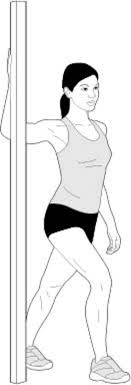 1 – “Tight pectoral muscles (often from rounded shoulder posture) correspond with weak rhomboids (the muscles between the shoulder blades), so it is important to combine a doorway stretch with retractor strengthening activity, such as a rowing exercise,” Jennifer explained.
1 – “Tight pectoral muscles (often from rounded shoulder posture) correspond with weak rhomboids (the muscles between the shoulder blades), so it is important to combine a doorway stretch with retractor strengthening activity, such as a rowing exercise,” Jennifer explained.
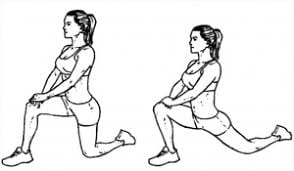 2 – Jennifer highlighted another common issue for riders as “tight hip flexor muscles (often caused by sitting for prolonged periods), which pull the pelvis into an anterior tilt, causing an arch in the low back. I use hip flexor stretches combined with core strengthening to help achieve a flatter back position for horsemanship.”
2 – Jennifer highlighted another common issue for riders as “tight hip flexor muscles (often caused by sitting for prolonged periods), which pull the pelvis into an anterior tilt, causing an arch in the low back. I use hip flexor stretches combined with core strengthening to help achieve a flatter back position for horsemanship.”
 3 – The groin is another essential muscle for riders to stretch, as these muscles can get tight from keeping your seat in the saddle. Jennifer suggests a side lunge that will improve your range of motion for your hips.
3 – The groin is another essential muscle for riders to stretch, as these muscles can get tight from keeping your seat in the saddle. Jennifer suggests a side lunge that will improve your range of motion for your hips.
4 – Lower back pain is also a common rider complaint. These aches and pains can be the result of strained muscles caused by excessive riding or improper posture. Jennifer suggests a standing hamstring stretch but notes, “an important point is not to round your back and hinge forward at your hips.”
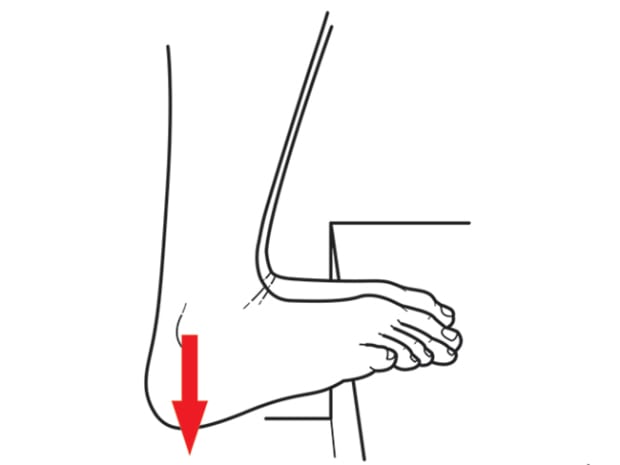 5 – Finally, preparing your lower leg will improve your heel position. It is vital to stretch your calf muscles. Jennifer suggests stretching on a step, positioning your toes on the step, and dropping your heels over the edge of the step.
5 – Finally, preparing your lower leg will improve your heel position. It is vital to stretch your calf muscles. Jennifer suggests stretching on a step, positioning your toes on the step, and dropping your heels over the edge of the step.
D’Onofrio added one last point; “A caution I would give is not to overstretch a joint that has an excessive range of motion. If you are hyper-flexible at any joint, you want to focus more on strengthening the surrounding muscles instead of stretching.”
****
Disclaimer – all of the above information is general in nature. Anyone with an injury history or specific concerns should request a referral from their physician for a physical therapy appointment and receive a program specific for their concerns.


